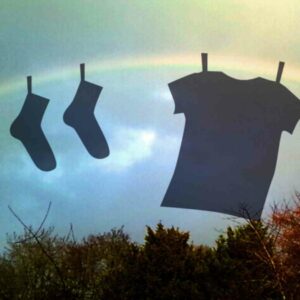 You know that moment when you’ve built a 40-story building and you find out you have to rip it down because it blocks your neighbor’s sunlight? Even if most people can’t relate to this at all, it’s a reality that you could face if you don’t get a “shadow study” in San Francisco before you build. A “shadow study” must be conducted before granting permits for building construction if the building would cast any shadow over land owned by the San Francisco Recreation and Park Commission.
You know that moment when you’ve built a 40-story building and you find out you have to rip it down because it blocks your neighbor’s sunlight? Even if most people can’t relate to this at all, it’s a reality that you could face if you don’t get a “shadow study” in San Francisco before you build. A “shadow study” must be conducted before granting permits for building construction if the building would cast any shadow over land owned by the San Francisco Recreation and Park Commission.
Being on a Shadow Task Force sounds exciting (is it top-secret black ops?) until you realize it’s literally measuring shadows in a public park. If you want to read phrases like “total shadow load of 10.203%” and “1% net new shadow,” then you’ll want to read these laws that get granular about shadows in ways you never imagined were possible.
The more I read about municipal shadow measurement, the more it sounds like a mathematical nightmare, since you’re measuring “shadow loads” that change from minute-to-minute, and between seasons. Calculating the “percent net new shadow” means measuring the total shadows cast by the minute every single day of the year, and measuring the percentage of change each day.  Though I’m sort of making fun of shadow laws, I do think it is important to keep parks open to the sky. I’ve seen city parks surrounded by 60-story skyscrapers that look dark, barren and sad, having lost most vegetation, and featuring corporate art that exists only to fulfill zoning ordinances. You really can sense when an artist was passionate about meeting zoning requirements for quantity of art pieces per commercial development.
Though I’m sort of making fun of shadow laws, I do think it is important to keep parks open to the sky. I’ve seen city parks surrounded by 60-story skyscrapers that look dark, barren and sad, having lost most vegetation, and featuring corporate art that exists only to fulfill zoning ordinances. You really can sense when an artist was passionate about meeting zoning requirements for quantity of art pieces per commercial development.
San Francisco is not the only city that regulates shadows; in fact, 19 states now prohibit HOAs from unreasonably restricting access to sunlight for solar panels and drying clothes on clotheslines. These states, like Florida, Oregon and Colorado, are known as “Right to Dry States.” HOAs commonly have restrictions against clotheslines, since they are often viewed as unsightly. However, in states with “Right to Dry” laws, HOA rules are void if they unreasonably restrict access to sunlight for energy-conservation purposes (like solar panels and clotheslines). Fighting for your right to party may still be tough, but the battle for the right to dry clothing has been won.
Mandating clothesline sun might seem ridiculous; however, it’s part of eliminating restrictions on alternative sources of energy. Residential laundry use produces 179 million metric tons of carbon dioxide emissions each year, which makes HOA distaste for clotheslines seem utterly unimportant.
Florida was the first state to pass a right to dry law, and is one of the only states that explicitly prohibits restrictions against clotheslines. Most other states prohibit restrictions against systems that rely on solar energy, so clotheslines are indirectly protected. However, few people know these laws exist, which likely limits their efficacy. In Portland, Oregon, a development of 1,600 upscale homes called Forest Hei ghts has HOA restrictions explicitly prohibiting clotheslines, even though Oregon’s Solar Rights Laws make these “void and unenforceable.” It’s unclear how many people in Forest Heights know about their right to dry; it’s also unclear how many people in this upscale neighborhood want to air their formerly dirty laundry, literally.
ghts has HOA restrictions explicitly prohibiting clotheslines, even though Oregon’s Solar Rights Laws make these “void and unenforceable.” It’s unclear how many people in Forest Heights know about their right to dry; it’s also unclear how many people in this upscale neighborhood want to air their formerly dirty laundry, literally.
I don’t know if you can own the title to a physical beam of light; this seems like one of very few real estate questions best left to quantum mechanics and philosophy. However, you can in various ways own the right to be hit by beams of light. Your clothing may also have some sort of real property interest in sunbeams.
https://sfrecpark.org/DocumentCenter/View/15117/Item-1b-30-Van-Ness_Attachment-N—Draft-Joint-Resolution-052120
https://www.sightline.org/2012/02/21/clothesline-bans-void-in-19-states/
http://www.na-businesspress.com/JMPP/JMPP21-4/3_McEvoyFinal.pdf
(866) 519-9597


